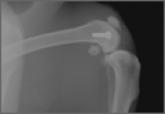Article

Evaluation of 3 Fixation Devices for Tibial-Sided Anterior Cruciate Ligament Graft Backup Fixation
- Author:
- Verioti CA
- Sardelli MC
- Nguyen T
We conducted a study to biomechanically evaluate 3 methods of tibial-sided fixation for anterior cruciate ligament reconstruction: fully threaded...
Article

Dilute Betadine Lavage Reduces Implant-Related Bacterial Burden in a Rabbit Knee Prosthetic Infection Model
- Author:
- Gilotra M
- Nguyen T
- Jaffe D
- Sterling R
Treatment of acute postoperative arthroplasty infection with polyethylene exchange and retention of components has a limited success rate,...
